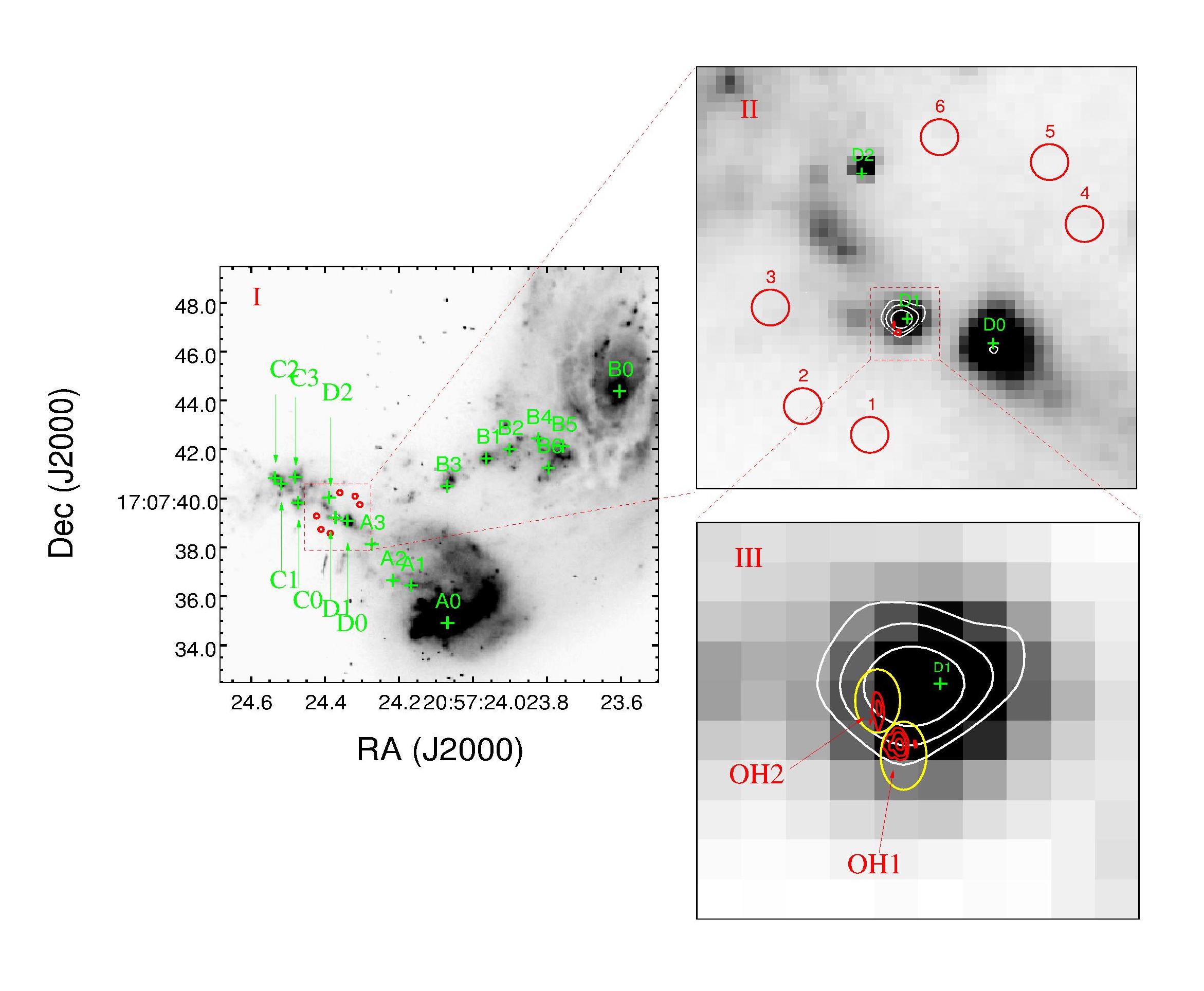
Radio properties of the OH megamaser galaxy IIZw 096
by Wu Hong (Guizhou Univeristy), Wu Zhongzu(Guizhou University), Sotnikova Yu (SAO, Russia), Chen Yongjun (SHAO China), Zhang Bo (SHAO China), Mufakharov T(SAO, Russia), Shen Zhiqiang (SHAO, China), Chen Xi (Guangzhou University, China), Mikhailov A (SAO Russia), Mingaliev M (SAO Russia), Han Xianming L, Misra Prabhakar

IIZw 096 is classified as a LIRG (Inami et al. 2010), and is one of the most luminous OHM galaxies known (Bottinelli et al. 1986). This particular source is the second system to host formal megamasers involving both OH and H2O species (Wagner 2013; Wiggins et al. 2016). Optically, IIZw 096 shows complex morphology (Inami et al. 2010). It contains four main regions, denoted A, B, C, and D (see Figure 1); sources A and B are possibly two spiral galaxies. Near-IR imaging and spectroscopic observations show that source D is a powerful starburst not associated with the primary nuclei (sources A and B), which could be a starburst in the disturbed disk of source A, or even the nucleus of a third galaxy (Goldader et al. 1997; Inami et al. 2010).
We analysed two-epoch EVN archival data of the OH 1667MHz line emission of IIZw 096 and confirmed that this source’s OH 1667MHz line emission is mainly from two regions. We found no significant variations of the OH 1667MHz line emission from the two areas, including the integrated flux densities and peak positions. The OH 1665MHz line emission is detected at the 6σ level, with a peak of about 0.42 mJy beam−1 from the OH1 region. The OH emission regions reside in comp D1, which shows the brightest CO and HCO+ emission. The molecular mass in the central part (∼130 pc) is about 2.5 × 109 Msun, which is consistent with the view that there is a high mass concentrated in the central region (Migenes et al. 2011; Inami et al. 2010).
By using archival data from the Very Long Baseline Array (VLBA), Very Large Array (VLA), and Atacama Large Millimeter Array (ALMA) observations, we investigated the properties of the environment of this component through H I, CO(3-2), and HCO+(4-3) lines and the multi-band radio continuum emission. We found that the comp D1 shows the brightest CO, HCO+ line emission, as well as multi-band radio continuum emission. The environment around D1 shows no clear velocity structure associated with circular motions, making it different from most other OH megamasers (OHMs) in the literature, which might have been caused by an effect during the merger stage. Meanwhile, we found that the CO emission shows three velocity structures around D1, including the central broad full width at half maximum (FWHM) region, the double-peak region where the CO line profile shows two separated peaks, and the region of the high-velocity clouds where the CO line peaks at a high velocity (∼11,000km s−1). Similarly, HI observations in absorption also show high-velocity clouds around the D1 region, which might be due to inflows caused by the merging of two or more galaxy components.
Based on the high-resolution K-band VLA and L-band VLBA observations of the radio continuum emission, we derived the brightness temperature in the range 105–106 K, which is consistent with other starburst dominant OHM sources in the literature. The multi-band radio continuum emission shows that the radio SED of comp A can be well fitted with the power-law equation, while comp D might contain contributions from the free-free emission. As a consequence, these results support a starburst origin for the OHMs, without the presence of an active galactic nucleus (AGN).
Published in: Wu et al., 2022, A&A, 661, A125